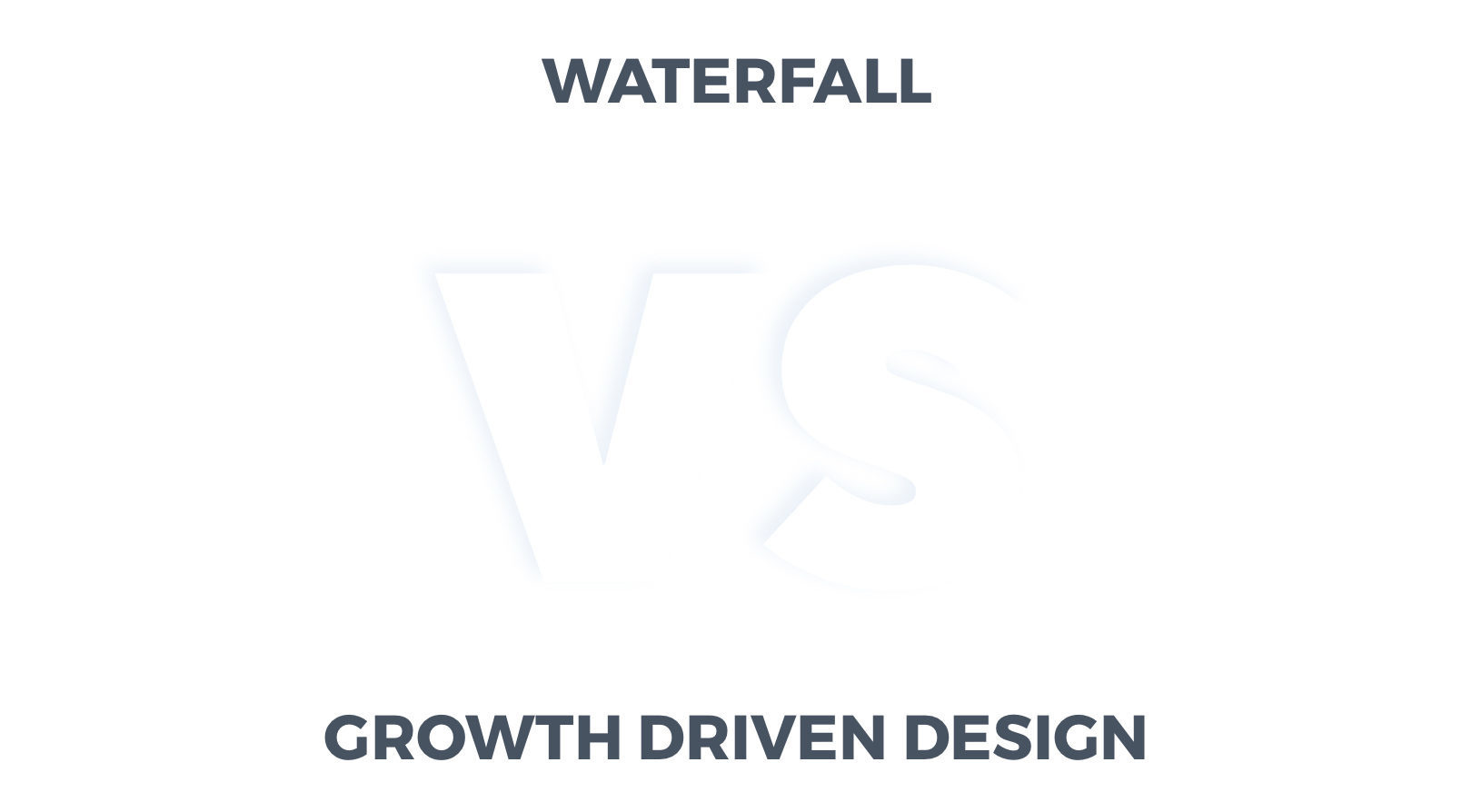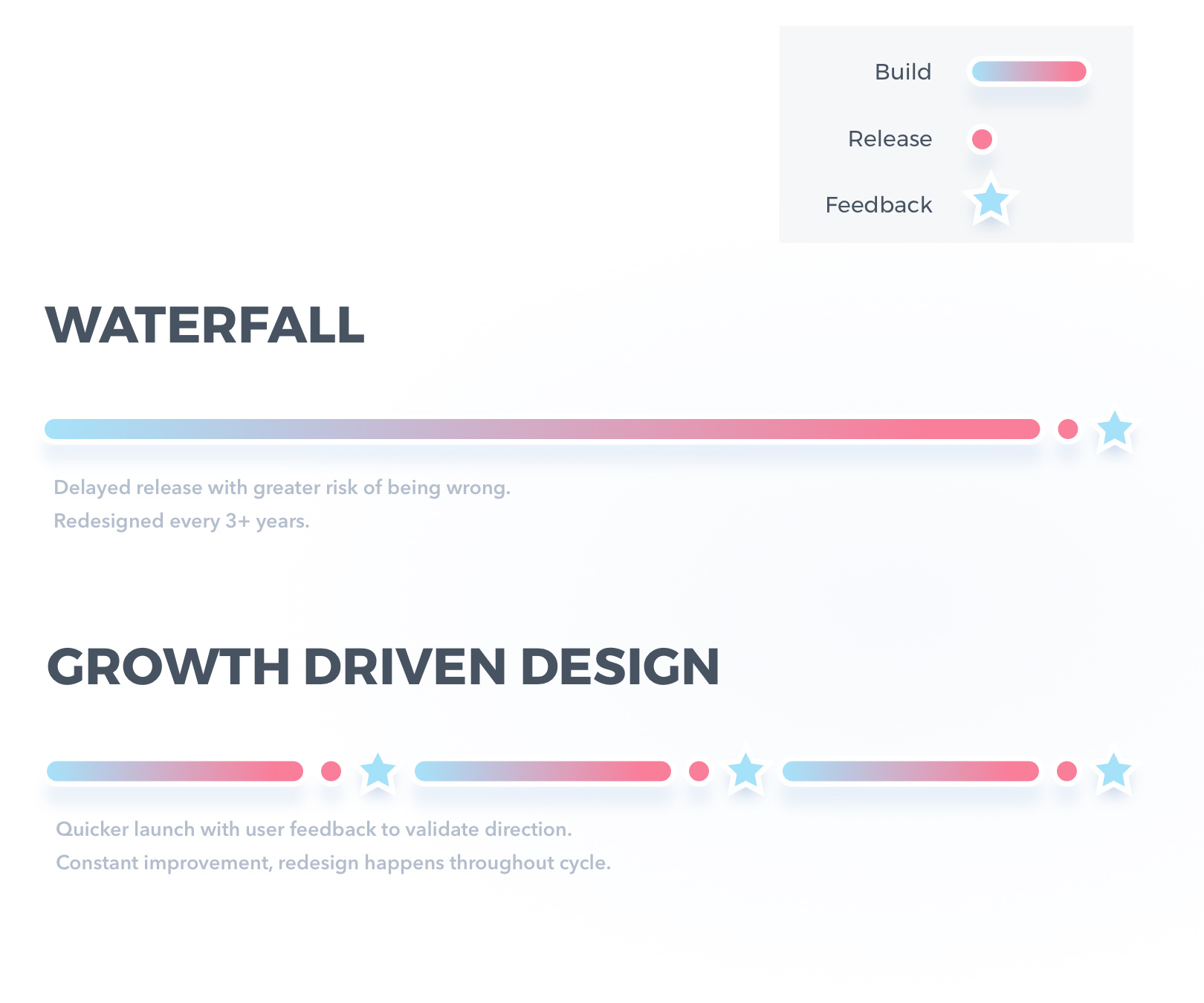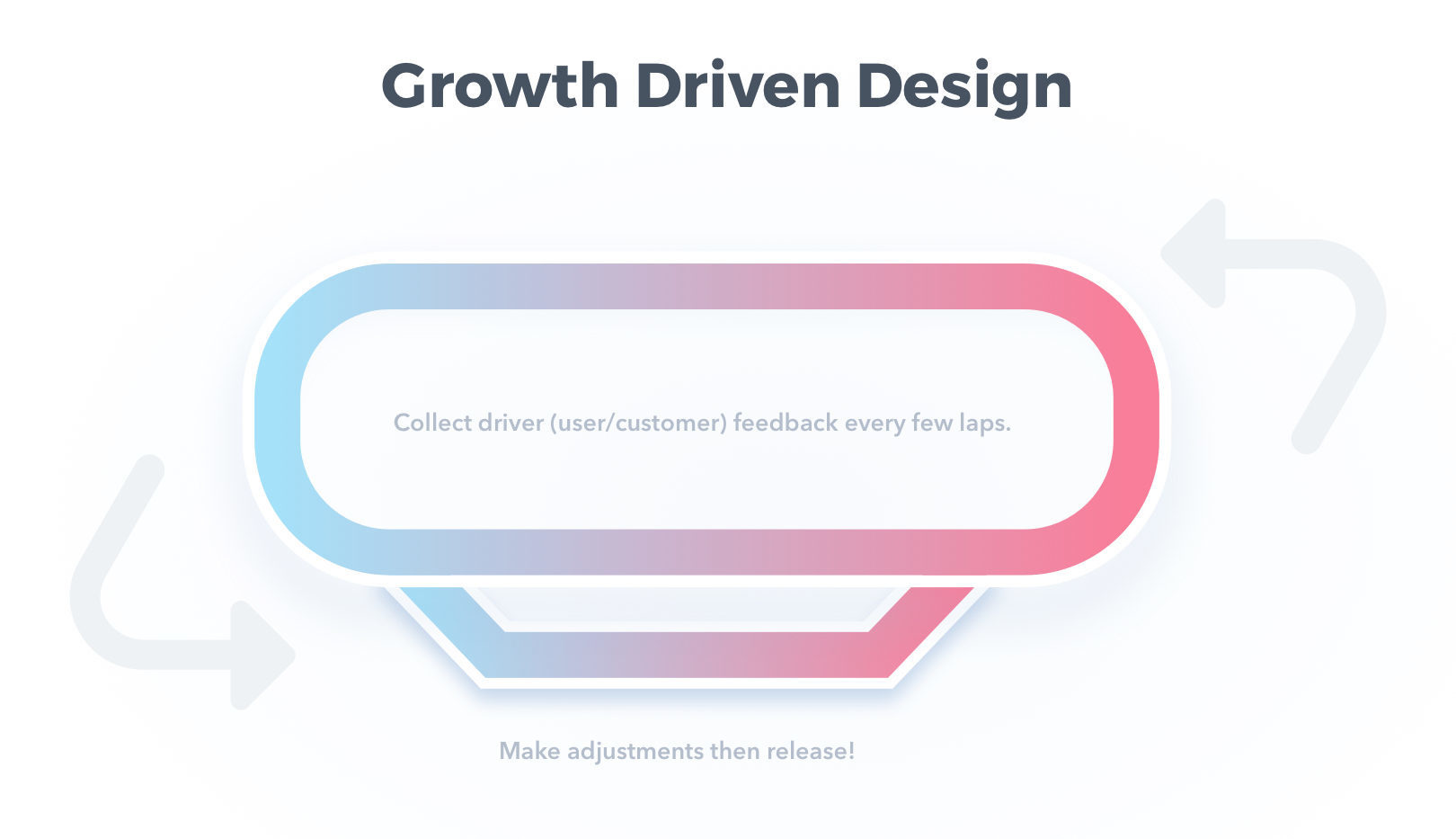Why do website redesign projects fail so often? They go over budget, launch late and never come out as planned? By the end of the project, you realize you have to redesign the site again because it already looks outdated. Traditional or Waterfall methodology for website redesigns does not work. Site builds can vary from 60 days up to a year or more! In today's economy, “time is money” is true more than ever, so every day your poor performing site persists, you are losing potential customers. Website costs vary anywhere from $10,000 to $500,000 and can exceed $1M+ depending on your business needs, so you need to make sure a return on that investment is in the near future.
For the purpose of analogy, imagine your website is a race car and the track is the internet. For every lap you are not on the track or barely chugging along, you are falling behind to your competitors.
Before we dive deeper, let’s discuss the role of your website.
Your website is your best marketing asset. The reason is simple, because all if not most of your marketing leads to your website or landing page. So if your website is not performing as it should, you are throwing marketing dollars away.
Your website is an important resource for your customers. This is especially true for B2B companies with longer sales cycles, however, B2C company websites still provide important information about the product or services they sell. Unless you have been living under a rock, you know customers love to research and try before they buy.
Your website is an awesome salesperson. Your site is available to customers 24/7 and can be accessed from anywhere in the world. It can provide valuable information about customer behavior, including content they have shown interest in. This is when a dialed marketing machine takes advantage and serves the most relevant next steps for your customer to take, such as a retargeting campaign with relevant CTAs. The role of your website is very important and will directly affect how you should approach a redesign project.

What in the world is waterfall methodology or the traditional method of building websites? Traditional website projects move in a linear fashion with dependencies sprinkled throughout. You might recognize the following typical agency workflow:
Requirements > Design > Development > Testing > Deployment > Maintenance
It’s funny but also very saddening for me to see maintenance tacked on the end. So let’s pretend a website took 4 months to complete. The assumptions from the initial discovery phase or requirement gathering will now be put to the test four months later. The only problem is, traditional waterfall methodology does not include testing of those assumptions. Do not be fooled by “maintenance” which is just a funny word for fixing whatever breaks. So now you might be wondering, what is the better approach?

Agile Development methodologies have been used for many years by software teams and now marketers are realizing the benefits of breaking down huge projects into lots of smaller more manageable pieces.
So lets go back to my race car analogy. Let’s imagine a 500 lap race.
At first it seems very daunting but if you group the laps, lets say by 10, you begin to breakdown the race into more manageable pieces you can strategize. The 500 lap race now becomes 50 manageable milestones. Traditional waterfall method lacks user feedback. The driver in our analogy is the user! If you ask the driver how the car is handling after the race it’s too late and plain stupid. What’s the point of asking after the race is over?! If you ask the driver what’s wrong with the car, he might say “everything”! What do you do then? You just spent $1 million on a race car that lost the race. Think your CEO will be happy? The next CMO will come along and guess what? Another redesign project!
With an agile method we ask the driver how the car is handling every 10 laps (50 times throughout the race), and now we can make adjustments to win the race. The goal is to outperform your competitors and win the love and trust from your driver, the user! The biggest advantage in agile is user feedback. At the start of the project everyone has ideas and suggestions, but they are just suggestions until the rubber meets the road. It is vital for marketers to understand that the driver feedback is one of the most crucial pieces of information. UX or user experience designers take the feedback and find a balance between business goals, users and developers. In our race analogy that would be, the team owner, the driver and pit crew/engineers.
Now, you might be thinking: “My competitor will win the race if I have to stop 50 times!” Again, here you go with your assumptions. Your competitor had zero adjustments while you had 50 improvements. You will win because you are faster and more efficient and the likelihood that they even finish the race is very slim, because everyone needs to refuel at some point.
With waterfall methodologies the cost of being wrong increases over time. In agile, your cost of being wrong decreases over time. Checking in 50 times during the race will always lead to success over checking in after the race. It’s common sense, yet we have been brainwashed thanks to traditional marketing. Digital is not set in stone, so let’s not treat it like a print project. It doesn’t matter if the copy is not 100% to your liking. Launch! During the time you spent deciding on copy and colors, your competitors just completed 20 laps. That’s 20 laps they were in front of the eyes of your target audience!

If you have heard of Growth Driven Design (GDD), then you have heard of agile. GDD has gained popularity in the last couple years thanks to Hubspot. The initial release of your website is called “the launchpad”, or the most crucial pages and features your website needs to get on the race track. This is always the hardest phase thanks to the perfectionist in all of us, however, it’s digital so take a sigh of relief knowing more pages and features are coming. The best part is, improvements are based on data instead of assumptions.
In between releases, UX research and analytics are used to make adjustments. Content is always one of the bottlenecks in waterfall methodology, however in agile or GDD, content is created and adjusted as needed. Instead of spending two months with constant revisions, go live and test! The digital landscape is constantly changing. The advantage with agile is the ability to adjust on the fly. The waterfall method does not have room for adjustments. Everything is always out of scope or affects other areas. If it starts raining during the race, don’t worry, the next pit stop (iteration) you will add rain tires and blow by your competition.
Another benefit of agile or GDD is a smaller upfront cost. Instead of paying a large sum upfront like in waterfall, you divide the cost into a more manageable retainer with your agency. How long should the engagement last? As long as you are in first place. The likelihood that your competitors are treating their marketing site like a product is very slim, so take advantage and get ahead. In the course of 2 years your site will change drastically, constantly improving based on user/customer feedback instead of assumptions.

Agile methodology is useful for software products but the main underlying idea is used in Growth Driven Design. That is, breaking large tasks down into more manageable pieces while pulling in feedback from business stakeholders, users and developers. In our next journal entry we will discuss how UX is the vital glue that holds everything together. Until then, you can learn more about GDD here.







